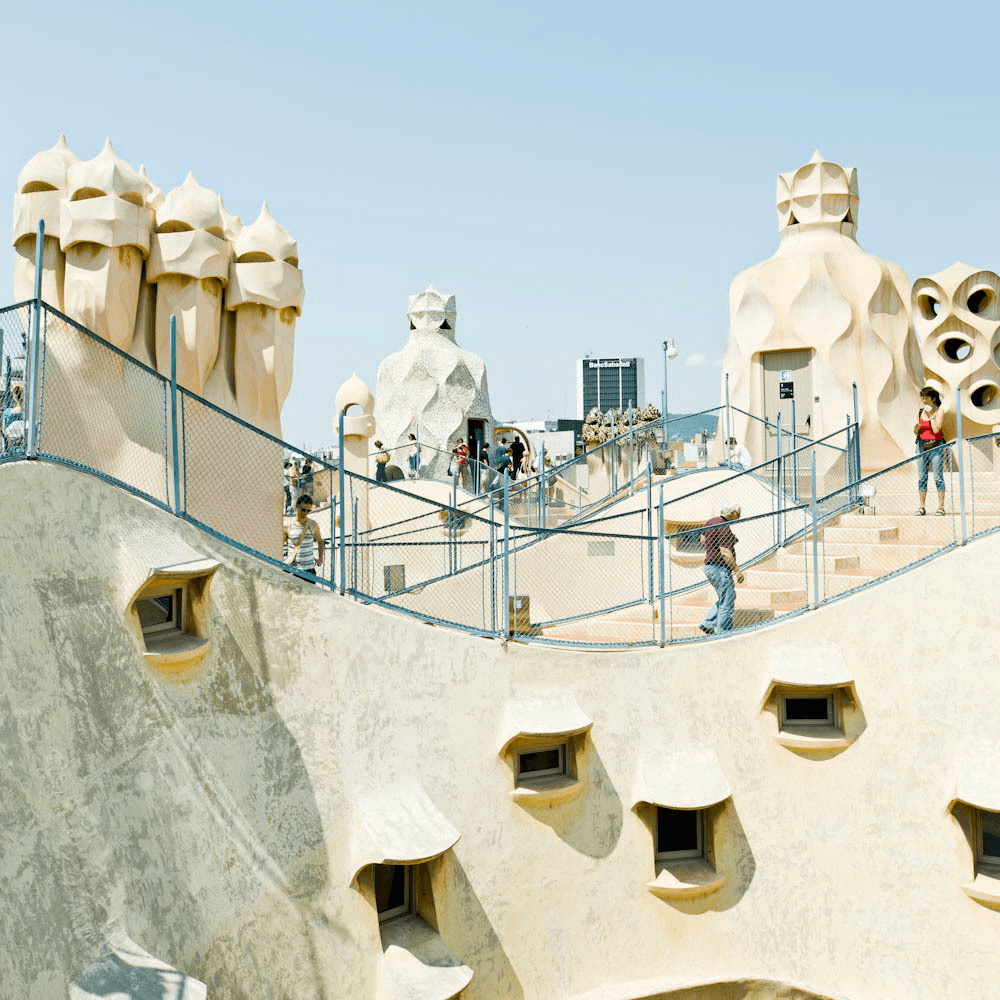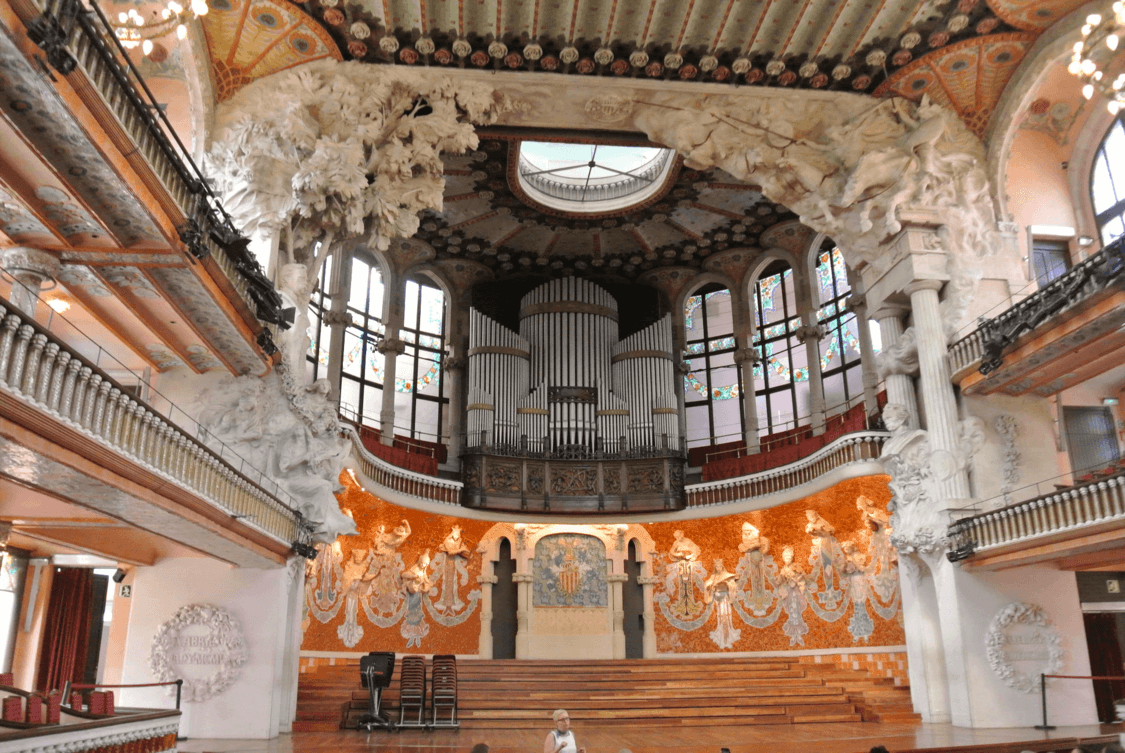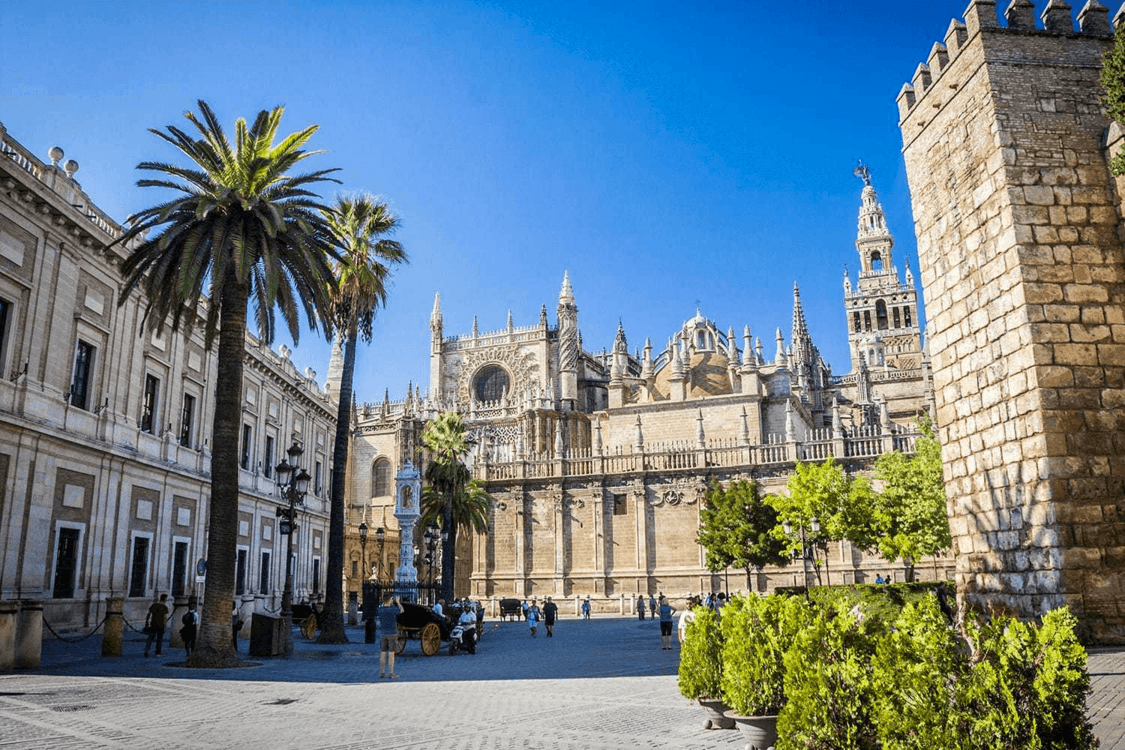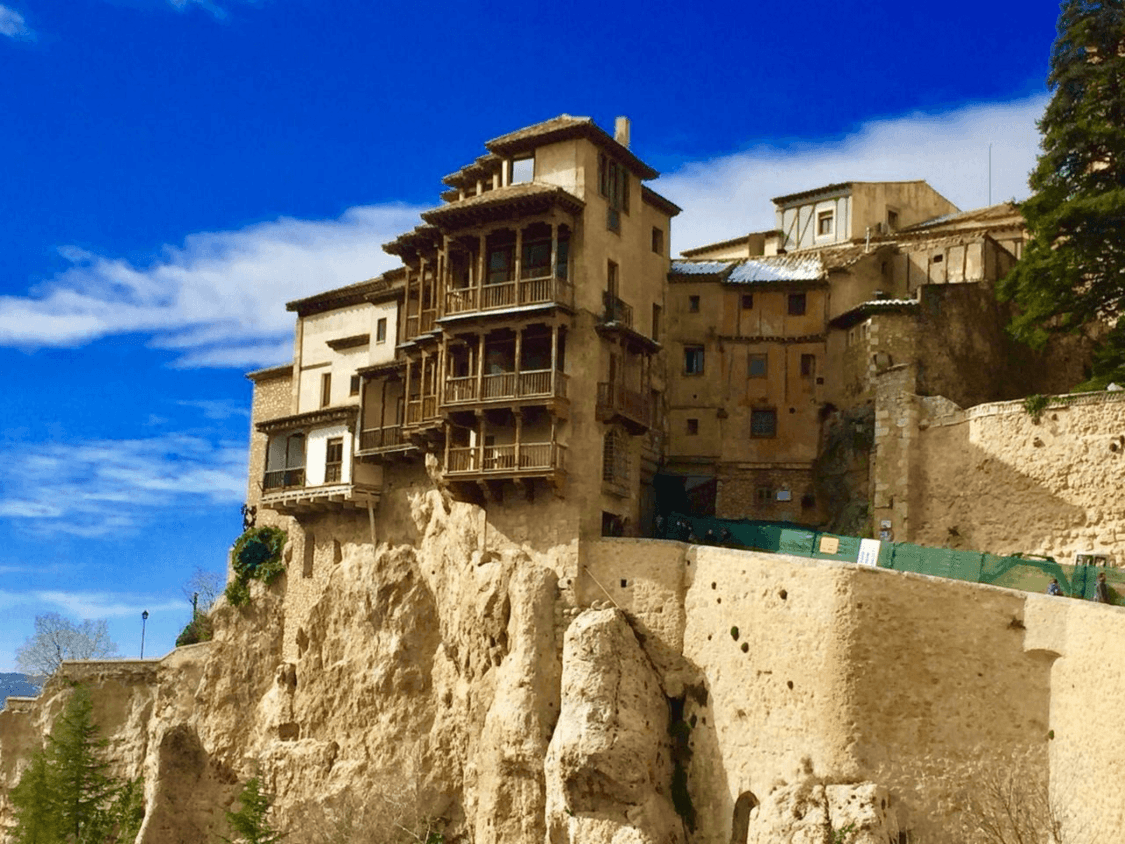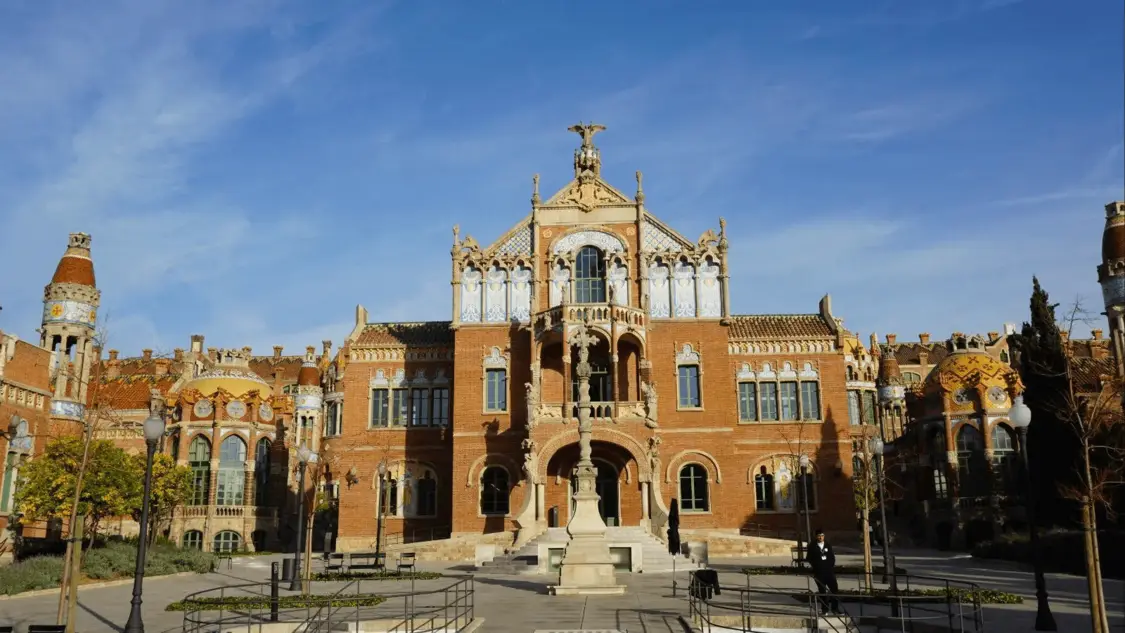Park Güell
Park Güell is located in the suburbs of Barcelona, in the 'Gràcia' district. It is an open space adorned with stunning mosaic tiles on various stone benches, columns, and steps, creating a colorful and dreamlike atmosphere. This place is also listed as a UNESCO World Heritage Site.
Entering through the gate between two gatehouses, you will see a highlight area featuring a Roman-style colonnaded hall and the famous colorful mosaic lizard on the steps, which is the park's treasure. Above the hall is a large square with wavy stone benches decorated with vibrant mosaic patterns, making it the perfect place to relax.
Royal Alcázar of Seville
The Royal Alcázar of Seville has a long history. It was once an Islamic palace and then transformed into a Christian king's palace during the Reconquista. After centuries of renovations, it has become a treasure that blends architectural elements from both the East and the West. It is also the filming location for the Martell family's palace gardens in the TV series 'Game of Thrones'.
Casa Milà
In 1984, Casa Milà became famous for its outstanding artistic and historical value and was listed as a World Heritage Site by UNESCO. In the famous 'Block of Discord' in the center of Barcelona, you will see a uniquely shaped apartment building, which is the famous masterpiece of Antoni Gaudí—Casa Milà.
It has three wavy facades, balcony railings made of twisted iron bars and plates, and large windows. More notably, on the roof, there are some sculptures that look like aliens, which are actually chimneys and ventilation pipes. In 1984, Casa Milà was selected as a World Heritage Site by UNESCO for its outstanding artistic and historical value.
Sagrada Família
Construction of the Sagrada Família began in 1882, and it has been a famous tourist attraction in Spain ever since. In 1883, the renowned architect Antoni Gaudí took over as the chief architect and continued his work until his death in 1926. During Gaudí's lifetime, the Nativity façade and the crypt were designated as UNESCO World Heritage Sites.
The church's 170-meter-high tower makes it an indispensable part of Barcelona's skyline, visible from almost anywhere in the city. Additionally, visitors can ascend the church by taking an elevator to the top, offering a panoramic view of Barcelona and a close-up look at the architectural details from above. They can also experience another masterpiece—the spiral staircase.
Alhambra Palace
The Alhambra Palace is the pinnacle of Moorish architecture and garden art, and it is listed as a World Heritage site. It is located on a hill in the suburbs of Granada. In Arabic, it means 'Red Fortress'. This palace was first built six to seven hundred years ago. The Alhambra Palace is a Moorish royal palace with a history of over 700 years, located on a hill in the suburbs of Granada. In Arabic, it means 'Red Fortress'.
It is a World Heritage site and represents the highest achievement of Arab architecture and garden art. The Palace of the Lions (Palacio de Leones) is located in the center of the courtyard, built in the 14th century, decorated with 12 lion statues, and is part of the king's residence, hence the name.
Palau de la Música Catalana
The Palau de la Música Catalana was designed and built by the master of modernist architecture, Domènech i Montaner, between 1905 and 1908. Its most outstanding features are the brightly colored sculptures and mosaic ceramic decorations. In 2005, this concert hall was listed as a World Cultural Heritage site by UNESCO.
Its most notable characteristics are the lifelike sculptures of the Muses and the hall's colorful and dreamy glass dome. When sunlight passes through the large stained glass and casts onto the stage, the soft and delicate halo makes the protagonists on stage appear even more magnificent and dazzling.
Seville Cathedral
Seville Cathedral is a famous building constructed over a century and is considered one of the 'Three Great Churches of the World.' It is a Gothic-style Catholic church. Originally, it was the Great Mosque of Seville, and after its conversion, its grandeur is awe-inspiring.
The main altar features 36 scenes depicting the birth, passion, and death of Jesus, with lavish decorations. The chapel is adorned with famous religious paintings by Seville School painters, among which Murillo's 'The Vision of Saint Anthony' is particularly noteworthy. The sacristy houses Goya's masterpiece 'Saint Justa and Saint Rufina,' which is of immense value.
Historic Walled Town of Cuenca
The Historic Walled Town of Cuenca (Cuenca) is listed as a World Heritage Site due to its well-preserved, robust medieval city and magnificent vertical layout. Surrounded by rivers on both sides, the erosion of the rivers has formed deep valleys, while the city is magically built on the slopes. The Historic Walled Town of Cuenca is considered one of the most splendid ancient cityscapes in Spain, offering endless beauty to cultural tourists in Spain.
Hospital de la Santa Creu i Sant Pau
Designed by the father and son team of Montaner, the Hospital de la Santa Creu i Sant Pau is acclaimed as 'one of the most beautiful hospitals in the world.' It was listed as a UNESCO World Heritage Site in 1997 and has now become a magnificent building that integrates a museum, cultural center, and elegant convalescent environment.
The hospital consists of 48 small buildings decorated with colorful mosaics, interconnected underground. Gardens and green spaces adorn the areas between the buildings, and the entrance building features a spire on its top, offering a panoramic view from the summit.
Palau Güell
Located in the heart of the old town of Barcelona, Palau Güell was designed and built by Gaudí for Mr. Güell. It has a total of 6 floors, each with a different design style and function. This place reflects the architectural style seen in Gaudí's later works such as Casa Batlló and Casa Milà, and it has been listed as a World Heritage Site by UNESCO.
The iron-cast Güell family crest between the arches is imposing; the parabolic arch design of the central hall is ingenious, with the arches and columns clearly inspired by the Alhambra; the varied chimneys mark the beginning of Gaudí's bold chimney designs in his later works; and the extensive use of Gaudí's beloved trencadís (broken tile mosaics) technique, layered and intricate, is both exquisite and magnificent.




